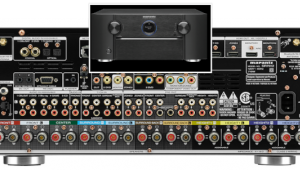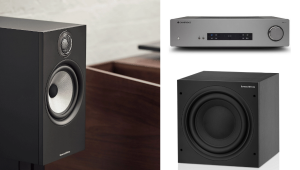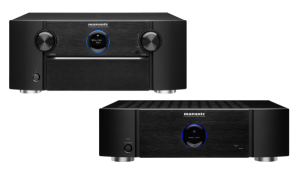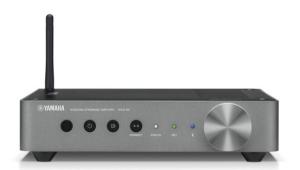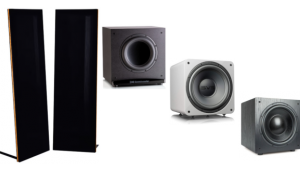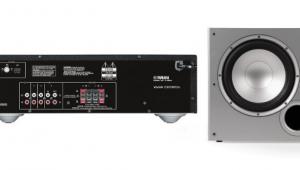CRT Upgrade, 3D PJs, Best Connections

I have a 34-inch Sony KD-34XBR960 direct-view CRT HDTV, which works fine, but it's a beast. Are the current LCD/LED TVs equal in picture quality to the 960? Other than multiple HDMI inputs, weighing less, and consuming less electricity, are there any visual benefits to replacing the 960?
Dave Butler
One benefit of replacing the 960 that you didn't mention is screen sizeyou can get a much larger screen, probably for less than you paid for the 960. Also, the 960 can only accept a 1080i signal, so you can't send 1080p/24 from a Blu-ray player, which could compromise the picture quality of Blu-ray movies.
On the other hand, CRT direct-view TVs are hard to beat in terms of black level, even with the most modern LCD TVs. (Pioneer Kuro plasmas can do it, but they are no longer available.) Yes, LED-backlit LCDs can reach similar black levels, but they often produce halos around small, bright objects on a dark background, such as stars in space or white credits rolling on a black background. LED edge-lit LCDs can also reproduce very low blacks, but only when there's absolutely nothing on the screenif there's anything at all on the screen, the overall black level is usually much higher than your 960 can achieve.
Bottom line: I don't know of any current flat panel that can match the overall picture quality of the 960 (as long as you keep it calibrated). However, it's really too small to be considered a true "home theater" display. It's a coveted model among enthusiasts, so you can probably sell it, but I suspect you wouldn't get more than maybe $1000 for it, which is actually quite good for a CRT TV these days. If it were me, I'd put it in a secondary roomon a very sturdy stand!and get a larger flat panel for the main viewing room. It might not perform quite as well, but the larger screen would be far more immersive.
The Future is 3D
I am building a budget home theater in my basement, and I want to future-proof it as much as I can. I'll run extra cables and conduit between key locations and potential future speaker locations. (BTW, your podcast with Chris Kyriakakis of Audyssey was a big help with that!)
My other big item is 3D, and I want to be prepared for it. Do I need a special screen material for the kind of 3D that uses shutter glasses? (I don't think I do; that's for some older 3D technologies, right?)
Also, are there any 1080p 3D or 3D-ready front projectors available now or within the next few months that I could consider? I haven't been able to find any so far. I realize that I may just have to wait and possibly upgrade my projector when the technology is more mature, but I just wanted to look into it to be sure.
Love the podcast; I have learned so much from listening!
Brian Skeens
I'm glad you're finding value in the podcast! As for your questions, you probably don't need a special screen material for 3D front projection, because it looks like many projector makers are going to use shutter glasses, not passive-polarized glasses. Systems that use shutter glasses don't require a special screen, but those that use passive-polarized glasses do. Such a screen does not work well with 2D projection, so you'd need two screensone for 3D and one for 2Dif you were going to use a polarized 3D projector. For shutter-glasses front projection, I recommend a screen wit a bit of gain, such as the Stewart Studiotek 130, because so much light is lost passing through the glasses.
Most of the 3D projectors I know about can hardly be considered "budget"for example, we're about to get the Digital Projection Titan 3D DLP projector for review, which uses active-shutter glasses, but it lists for $85,000. At CES, LG showed its CF3D SXRD 3D projector, which uses passive-polarized glasses (and thus requires a special screen) and will probably carry a price tag in the $10,000 to $15,000 range.
I saw an Optoma 3D 720p projector at CES, which used active-shutter glasses. The company has not yet announced any 1080p 3D projectors, but when it does, I'm sure they'll be far less expensive than the Digital Projection or LG models. In fact, Optoma has three models of 3D 720p projectors in the $700 to $800 range right now.
Best Connections
Now that my car is paid off, I can finally upgrade my 10-year-old HDTV and 6-year-old A/V receiver to take full advantage of DTS HD. Should I run all my components (Dish Network, Xbox 360, PS3, and HD DVD) straight to the four HDMI inputs on the TV, and then run one cable from the TV's HDMI output to one of AVR's HDMI inputs? Or should I run all my components into the HDMI inputs on the AVR and then connect the AVR's HDMI output to one of TV's HDMI inputs?
Keep in mind that I'm most interested in picture quality. I've always wondered if picture or audio quality degrades when not running a cable directly to the appropriate device. For example, I always run the component-video cables directly to my HDTV and the optical digital cables directly to my receiver. But now that I'll be upgrading, and HDMI carries both audio and video, I just don't know which route I should take.
Mike Boushek
Very few TVs have an HDMI pass-through output, so I'm curious to know which model you're getting that does. In most cases, connecting the source devices to the AVR via HDMI and the AVR's HDMI output to the TV is the best way to go. I can understand the notion that passing a signal through more devices could degrade the audio and/or video quality, but that's not generally true with digital signals like those carried by HDMI.
On the other hand, some AVRs do degrade the video signal by clipping "above white" and "below black," shades of white and black that lie outside the boundaries of white and black defined for video signals. If a receiver does this, you won't see areas of above-white information, which do exist in real content despite the supposed limitation imposed on video signals. Also, if the AVR clips below black, you won't be able to set the TV's brightness control properly. All of Home Theater's recent AVR reviews include a video test-bench section that reveals whether or not an AVR clips above white and below black, so pay close attention to this.
If you have a home-theater question, please send it to scott.wilkinson@sorc.com.
